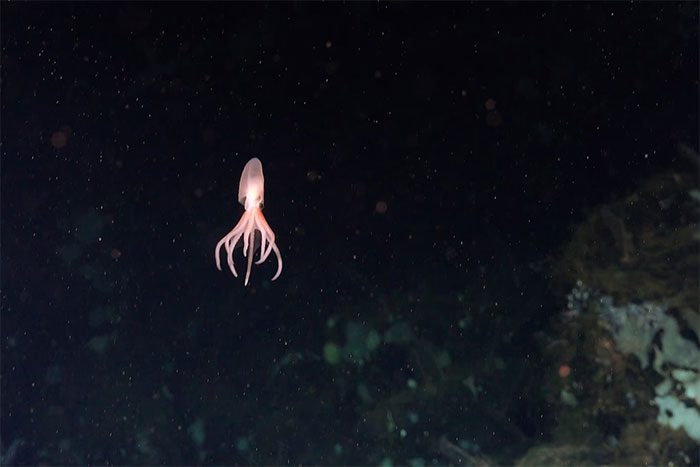Deep-sea regions of the Pacific have revealed four new species believed by scientists to be “hybrids” of extraterrestrial life.
The four new species are the result of two deep-sea exploration missions conducted by marine biologists aboard the R/V Falkor, a research vessel from the Schmidt Ocean Institute (USA), as they examined seamounts off the Pacific coast of Costa Rica.
According to Sci-News, during the first expedition in June 2023, Dr. Jorge Cortés and his team discovered two “octopus nurseries.”
These nurseries are linked to hydrothermal vents, where warm mineral-rich water is released from fissures, providing warmth and essential conditions for life in the seemingly cold and lifeless depths of the ocean.
The hydrothermal vents in the Pacific region near Costa Rica are particularly unique as they are associated with an ancient volcanic system.

Dorado octopus, one of the newly identified species – (Photo: Schmidt Ocean Institute).
Six months later, the team returned and confirmed the vibrant year-round reproductive activity of the octopus species.
Even more remarkably, several new species, previously unidentified anywhere in the world, have emerged.
One of the new species belongs to the genus Muusoctopus and has been named Dorado, referencing the rock formation known as El Dorado where it was found.
This species is particularly intriguing as it exhibits unique evolutionary traits for egg incubation in hydrothermal vents on the ocean floor.
The second species is related but distinct from the pearl octopus found at the Davidson Seamount off the coast of California, USA.
Additionally, there are two other new species still under investigation by scientists.
These new species enrich the already mysterious lineage of octopuses, known for their remarkable intelligence and surprising capabilities.
Scientists suspect these creatures may be hybrids of extraterrestrial life, based on a groundbreaking study published in 2018 by 33 prominent biologists from around the world.
Published in the scientific journal Progress in Biophysics and Molecular Biology, the aforementioned scientists explained the origins of octopuses through the theory of panspermia, which posits that biological materials from space were brought to Earth via ancient celestial collisions.
Not only did they sow the seeds of initial life, but they could also carry foreign materials, possibly even alien organisms that augment the existing biosphere and enrich the planet.
Octopuses may be the result of such interplanetary hybridization, as they appear suddenly in the evolutionary tree, exhibiting intelligence and numerous “advanced” traits that surpass many other cephalopods around the world.


















































